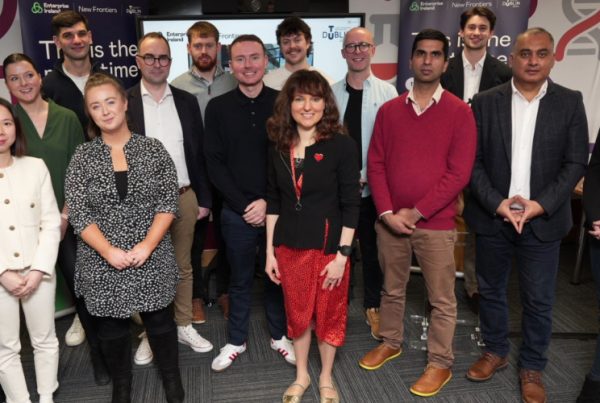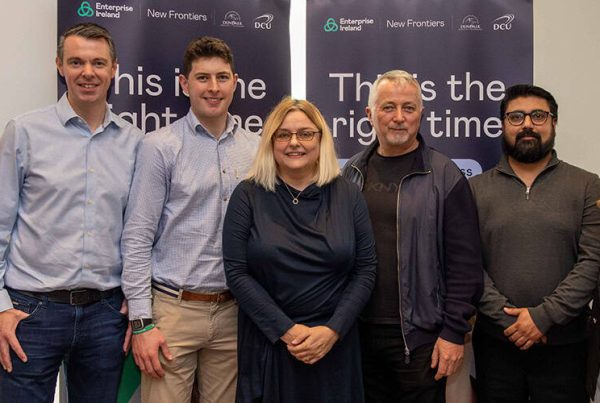
As a startup, making hires is an important decision that can have a huge impact on your finances, as well as on your productivity and growth. As an entrepreneur, you may not have any previous experience of recruitment, and you’re unlikely to have an HR Department to take care of this for you. Putting in place a successful recruitment strategy will require you to learn new skills and processes. Here are my tips for getting started.
Recruitment is the action of employing someone for one of two scenarios: to either fill a role that has been vacated, or to fill a role which has been created because of increased demand or business expansion. If you’re a startup, it’s most likely that you are recruiting for a new position. You may find the proposition of creating a new role daunting, but remember that you are potentially creating a competitive advantage that was previously untapped!
The recruitment process
There are five stages to recruitment:
- Vacancy verification – What is the position to be filled?
- Person specification – Who is the person to fill the position?
- Sourcing candidates – Where is the best place to find the best candidates?
- Interviewing and selection – Is the candidate as credible as their CV?
- Job offer – The right package for the right candidate.
An aspect of recruitment which tends to be over-looked is the expense that recruiting the incorrect candidate will generate for the organisation – in terms of re-advertising, low productivity, and increased training costs.
A person who has been recruited into a position that is unsuited to them will suffer from low morale, excess levels of stress, and may leave the job within the first few months of starting. To get the most out of it, it is imperative that you invest enough time and thought when creating the position.
Vacancy verification
The first step in this process is to decide what you want:
- What are the responsibilities of this role?
- What are the targets and objectives of this role?
- Is this a full-time or part-time position?
- Does this project have a time frame or is it an on-going role?
- Who will this position report and be accountable to?
- Could this position be out-sourced?
Spend 30 minutes considering these questions. You know you want somebody to work for the company, but what do you want them to do? It must be clear to you what you want or it will never be clear to the employee.
Person specification
Once the parameters of the job have been considered and developed, it is time to look at the person who will fill this role. What personality best suits the role? What education or experience levels would you prefer, or indeed does the job dictate? It is important to consider that we inhabit a culture that places immense emphasis on educational qualifications; however qualifications do not equate to experience. In my experience – if you have to decide between the two – qualifications can be gained in a short period of time, but experience cannot be bought.
Sourcing candidates
Next, you need to consider where the most appropriate placing of this vacancy is. General positions such as retail, tradesmen, hospitality, general operatives, etc. can be sourced from a relativity small pool; in this case the local newspaper may be the most useful tool. As the position becomes more specialised, jobs websites may become more appealing and these can reach a broader pool of talent. However, if this is unsuccessful it may be desirable to use a recruitment company to take the effort out of sourcing.
It is worth noting that recruitment company fees range typically range from 17% to 27% of the total annual salary of the prospective candidate. So, for example, if you are hiring an engineer with a starting salary of €60,000, you could pay anywhere from €10,700 to €16,200 in finder fees. You’ll need to consider what would be the best return on investment in this situation.
Interviewing and selection
This is your opportunity to flesh out the applicant’s CV, and a great chance to understand the applicant and their experience, as well as their expectations of the role and its future development. It is important to consider the CV and the person separately from each other and to make a list.
Firstly, based on the information contained in their CV, which candidate would you be most likely to hire? Secondly, after meeting with the applicants, make a list of which candidates you would be most likely to hire based on personality and the interaction of the interview. Is the same person at the top of both lists? It is very unlikely that they will be.
You need to consider what you value most from each candidate and their role within the organisation. The recruitment of candidates based only on intuition leaves the organisation vulnerable. As highlighted at the beginning of this article, employing an unsuitable candidate is expensive and time-consuming.
Job offer
At this stage, you have chosen the person you feel best suits the role you have available and now you need to make them an offer. A job offer is generally about more than money – depending on where the applicant is in their professional life cycle – however you will have to work within industry standards to attract the right talent.
Packages for employees can be expensive if you start to consider medical plans, pension plans, employee assistance programmes, etc., but at this stage of your business you have something that bigger organisations don’t have: flexibility. Work is no longer nine to five, and life no longer exists outside of this time frame either. You know this, it’s what you live. This is something people want in their working life, and the goodwill that can be generated from this will be incalculable.
Conclusion
Employers need to consider the recruitment process as a business transaction; you wouldn’t buy the wrong piece of machinery, or a computer package that didn’t meet your requirements. Similarly, you shouldn’t recruit someone just because you like them or have a ‘good feeling’ about them or because they have an attribute on their CV which you feel is missing from your own skill set. You can return or exchange a piece of equipment that doesn’t work correctly or is unsuitable for your needs, but you cannot do this with an unsuitable appointment.
The recruitment process is a reflection of your company’s standards and creates your employee’s expectation for the tasks ahead. A successful recruitment can add huge value to your startup and drive your business forward. It is well worth putting in the ground-work!
About the author
 Katie Murphy
Katie Murphy
Katie Murphy is a Human Resources professional and current New Frontiers participant at Waterford. Katie has particular interest in employee relations strategies, entrepreneurship, employee law and economics.
Katie’s early-stage startup, Clún-Ór, is an agri-business inspired by the 50 acre field opposite the Murphy house which Katie wanted to rent, but simply couldn’t afford.
Recent articles

Tech Startups In The Age Of AI: Alumnus Paul Savage On Speed, Quality & Risk

Fourteen Startup Founders Graduate From Phase 2 Of New Frontiers In Tallaght

Eleven Founders Graduate From New Frontiers In The Border Mid-East Region

Laying The Right Groundwork Helps Startups Prepare For Export Success

Startup In Dublin: Learn More About New Frontiers On TU Dublin’s Grangegorman Campus

Michael Furey On The Success Of Ronspot: “The Most Important Thing Is Research”

Showcase Day Celebrates Twelve Ambitious Founders In County Dublin (IADT & NovaUCD)

 Katie Murphy
Katie Murphy
